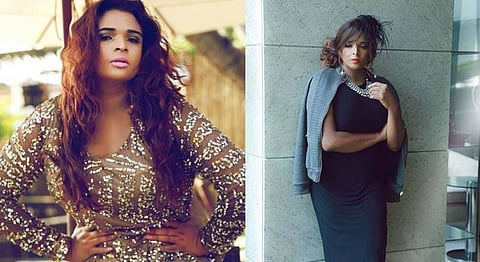
- HOMEGROWN WORLD
- #HGCREATORS
- #HGEXPLORE
- #HGVOICES
- #HGSHOP
- CAREERS
- ABOUT US
- CONTACT US

In the recent past, the Indian fashion industry has on a number of occasions been the grounds for inclusivity, especially when we speak of the vibrant LGBTQ+ community of approximately 4.9 lakh people. Harper’s Bazaar India, for instance, made history in September last year when it featured transgender models on its cover for the very first time and India’s very first modelling agency for the transgender community could also soon be a reality, with your help. Lakme Fashion Week (LFW) this year saw a milestone in the Indian modelling industry when Mona Varonica Campbell, India’s first plus-sized transgender model walked their ramp. A glance at her photographs from LFW and this 28-year-old model’s body language displays pure confidence, almost as if she was born to be a showstopper. Though this is far from the truth.
Campbell was born a boy in a typical south Indian family in Andhra Pradesh but since childhood she felt disconnected from her assigned gender and was deeply inclined towards the fashion industry. In fact Campbell’s life could have taken a very different turn if on her father’s insistence she had chosen medicine as her calling. Having ranked 90th in the all India EAMCET examination this was definitely a viable option for her. But Campbell was made of sterner stuff and choosing to pursue her dreams till the very end and she decided to enter the fashion industry. She graduated from NIFT in Hyderabad while supporting her education by working in the fashion retail industry. She went on to further study fashion management at London where with family support she underwent medical surgery to become a woman. This was only the beginning of Campbell’s journey as a confident woman ready to make her mark in the world. After being trained in Canada under professional makeup artists including MAC Cosmetics she returned to India to establish her very own make-up studio; Varonica Makeup Artistry. This gave her an opportunity to work with celebrities, models and fashion shows across India. Campbell had carved a niche for herself in the competitive glamour industry. So when exactly did she get time for modelling through all of this?
Campbell had grown up watching and admiring models on television, her idols had always been globally acclaimed models Naomi Campbell and Ashley Graham. “I have always drawn a lot of inspiration from them,” she told us in an interview. As a consequence of her transition Campbell had put on a lot of weight but that didn’t stop her from giving her love for modelling a fair chance. During her stay in Canada she readily took up the modelling offers she received by local plus-sized brands. “That gave me a boost to pursue my modelling career when I returned to India,” she said. While being the showstopper at fashion shows like “Faces Of Africa” by Suchir India and at the IFSC Fashion Week Campbell finally got her big break in the country as a model in LFW this year. “With encouragement from my family, I went for the auditions for plus size models at Lakme Fashion Week,” says Campbell. “To be shortlisted as one of the five finalists was a special moment for me because one of the judges on the panel was Wendell Rodricks; one of my favourite designers. I would often visit his store in Goa where I fell in love with his work. Its one of my dreams to walk for him!” she told us.
It’s remarkable that Campbell, from being born in the wrong body was able to transform her life to one where she is an icon of body positivity. So what has given her this ability to break conventions when it comes to body image? Campbell follows a simple formula here - “I love and respect my unique body. This gives me all the confidence I need.”
When asked what kind of changes Campbell would like to see in the future for plus-sized models and the trans community in the Indian fashion industry she said, “There are so few plus-sized and trans models in the country! We need more brands, designers and runways to represent them!” We couldn’t agree with her more. While the fashion industry has always been at the forefront of inclusivity it does indulge in an unfortunate dichotomy of tokenism. The need of the hour is to give visibility to unconventional models on such a large scale that they are integrated into the mainstream. Individuals like Campbell are a source of inspiration for this to become a reality and we hope will lead the way towards a truly inclusive fashion industry.
We suggest you read:
